Dec. Storm Exposes Old Fence, Ice Age Clay at Sand Beach
The storm-churned Atlantic waters combined with a king tide at the beach, taking out segments of sand dune and revealing ice-age clay deposits at the end of the beach.
January 6th, 2023
The storm-churned Atlantic waters combined with a king tide at the beach, taking out segments of sand dune and revealing ice-age clay deposits at the end of the beach.
January 6th, 2023
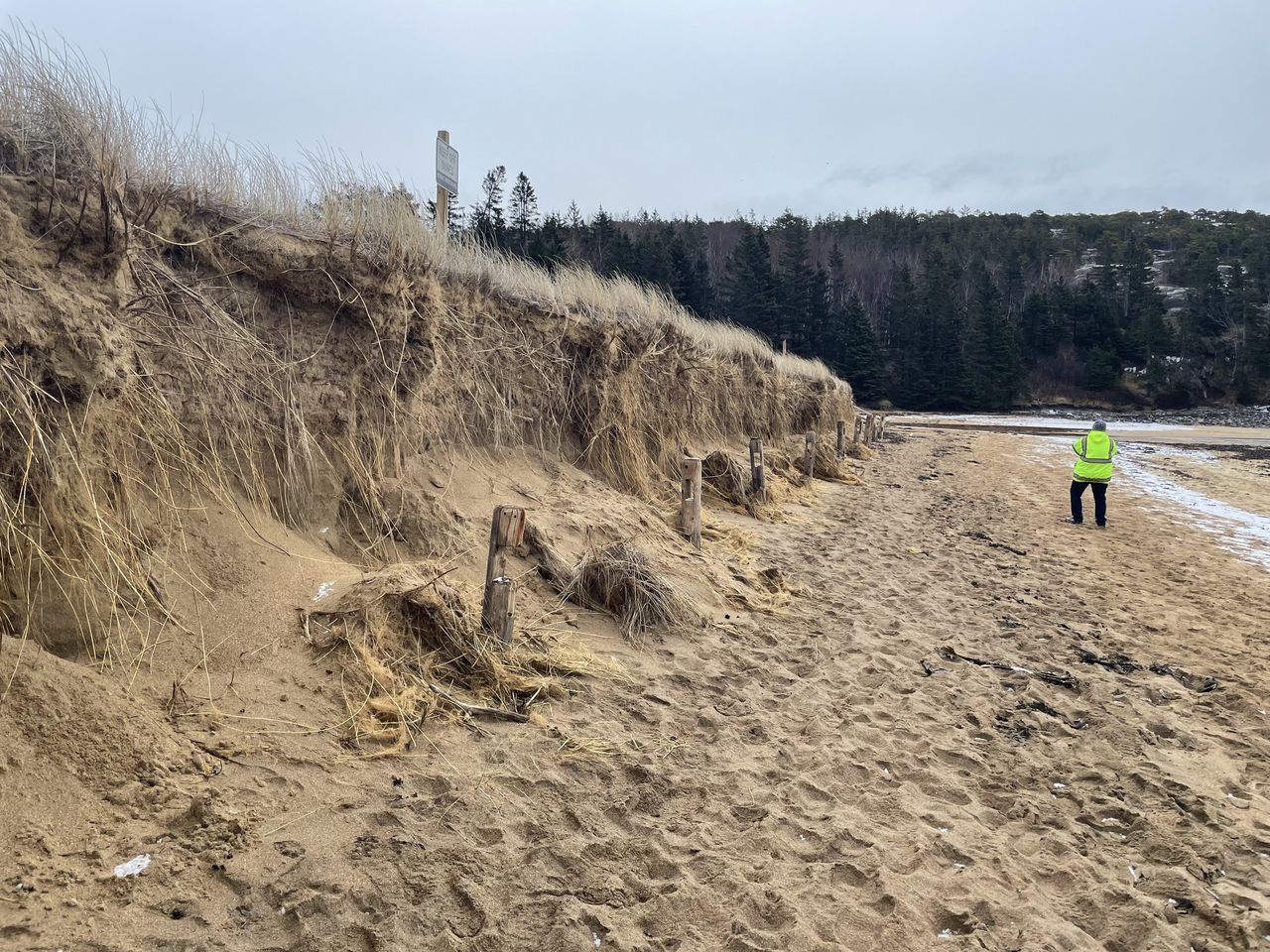
The December storm eroded a 6-foot sand dune at Acadia’s Sand Beach, exposing the remnants of an old fence. Photo courtesy Kate Petrie
BY SHANNON BRYAN
A massive winter storm hit the coast of Maine in late December, and it left its mark at Acadia National Park’s Sand Beach.
The storm-churned Atlantic waters combined with a king tide at the beach, taking out segments of a sand dune and eroding portions of shoreline. That erosion exposed remnants of an old fence previously covered by a 6-foot dune, and at the end of the beach, it revealed marine clay that was deposited there by a receding glacier during the last ice age.
Acadia National Park Education Coordinator Kate Petrie captured some post-storm images at Sand Beach, and noted that both ends of the beach have marine clay deposits that were laid down when the area was covered by a shallow sea. That ice-age glacier was so massive, it weighed down much of Maine’s coastline, pressing it underwater in the same way a grownup might sink a kid-sized inner-tube in a swimming pool.
Because glaciers tend to grind a whole lot of rock as they slowly advance, they can be chock full of fine-grained, silt-sized particles (aka “rock flour”).
As the glacier receded, clay-laden water runoff washed off the melting glacier and carried sediment from the ice into the sea, which then settled to the bottom. Eventually, as the glacier dissipated, the land rebounded and became higher than sea level. Grass, brush, and small trees grew, hiding those clay deposits.
That is until early winter storm surge knocked that grass, brush, and topsoil away.
Climate Change in Acadia
Storms like this have happened historically, and Sand Beach is an immensely dynamic environment.
While the Maine coast is known for its “nor’easters,” it’s the storms that come in from the south, such as the Decemeber storm, that cause the most erosion. Similar storms in 1950 and 1964, as well as tropic storm events in 2007 and 2011, eroded the beach, exposed the rocks and impacted the dune profile.
The exposed fence in Acadia’s most-recent storm is evidence of this cyclical history.
The good news is that the sand will be redeposited over the course of the seasons, cover the rocks, and stabilize. The dune grasses will grow and hold the sand. Visitors should stay off the dunes to protect the dune grass so it can do its job.
And while these events have happened in the past, it does appear that climate change is causing more frequency of high intensity events. Change in Acadia is happening more rapidly, broadly, and dramatically.
In the last 100 years, precipitation has increased by 6 inches, with more rain and less snow, while the seasonality of precipitation has shifted. Storms continue to become more intense and frequent. (A June 2021 storm dropped a record-breaking 5+ inches of rain in less than 3 hours and damaged Acadia’s 45-mile historic carriage road system, as well as trails, streams, and paved roads. The storm caused over $1.5M in infrastructure damage and repair costs, not including the environmental costs.)
Mountain summits, carriage roads, and trails have been eroded, washed out, and flooded by these new storms.
Learn more about the impact of climate change in Acadia
Additional coverage
Sand Beach seeing wicked erosion – via Fox Bangor
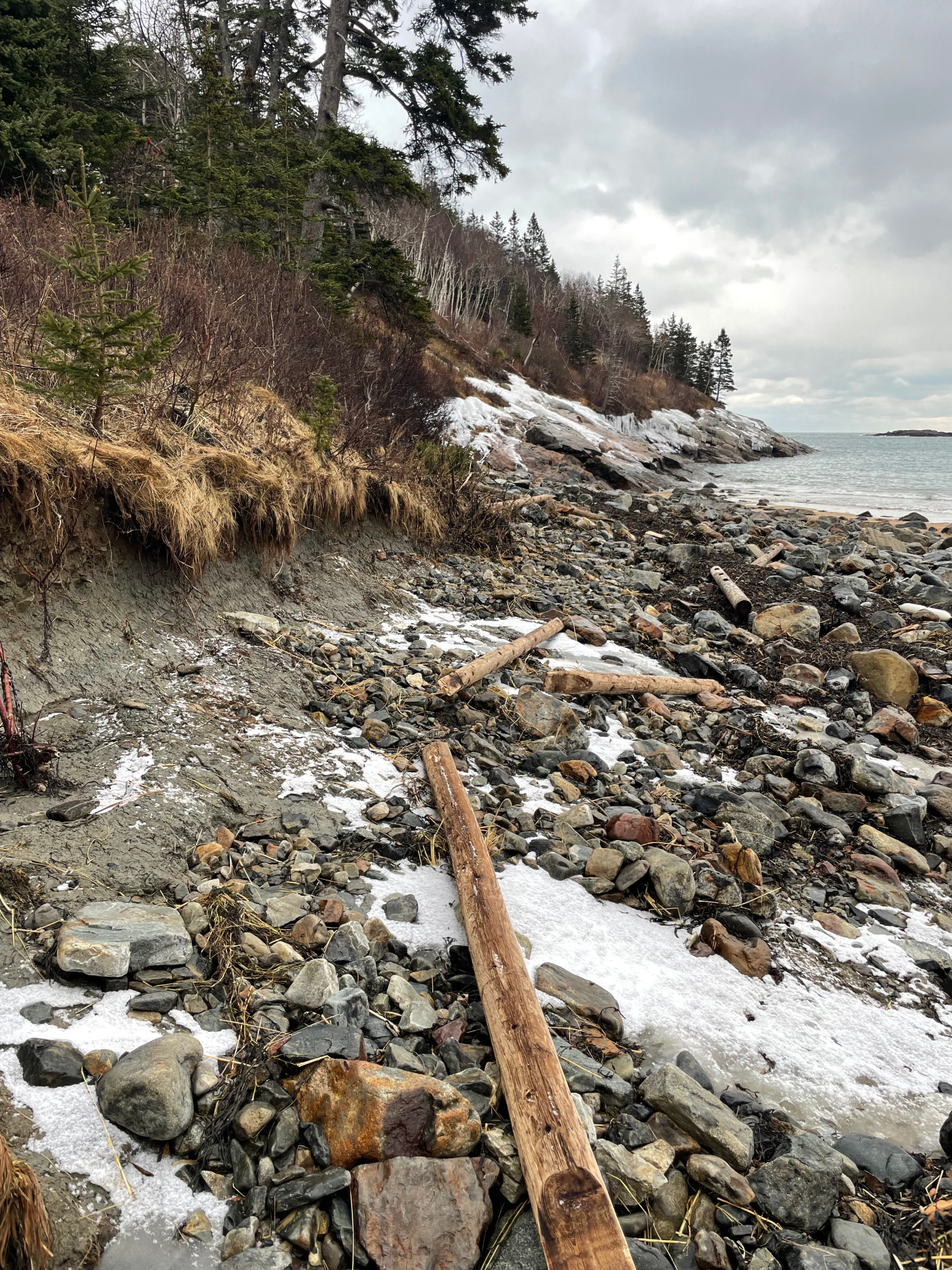
The end of sand beach, showing where storm surge knocked away grass and brush to expose a marine clay deposit left during the last ice age. Photo courtesy Kate Petrie
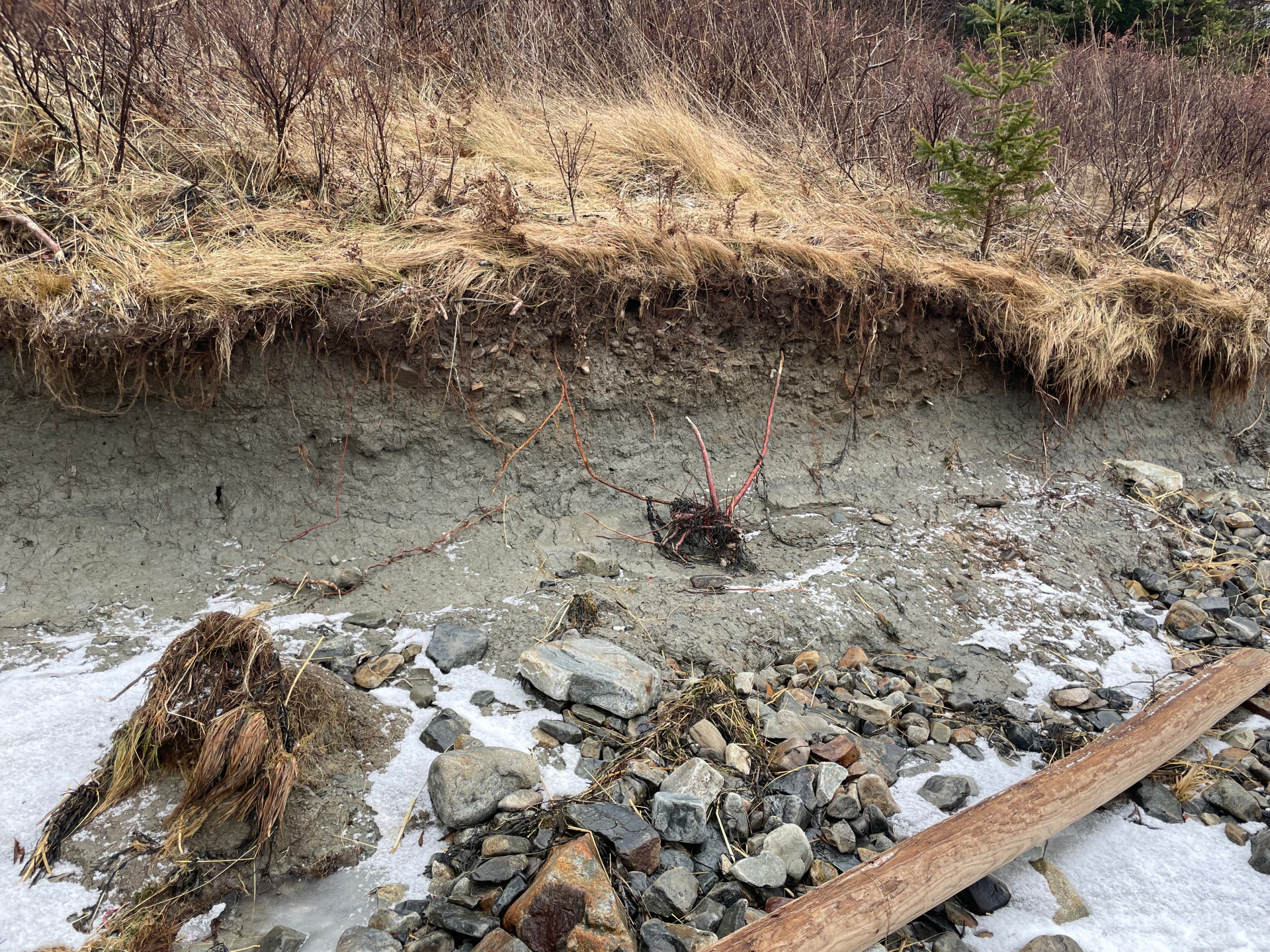
Marine clay deposit at Sand Beach. Photo courtesy Kate Petrie
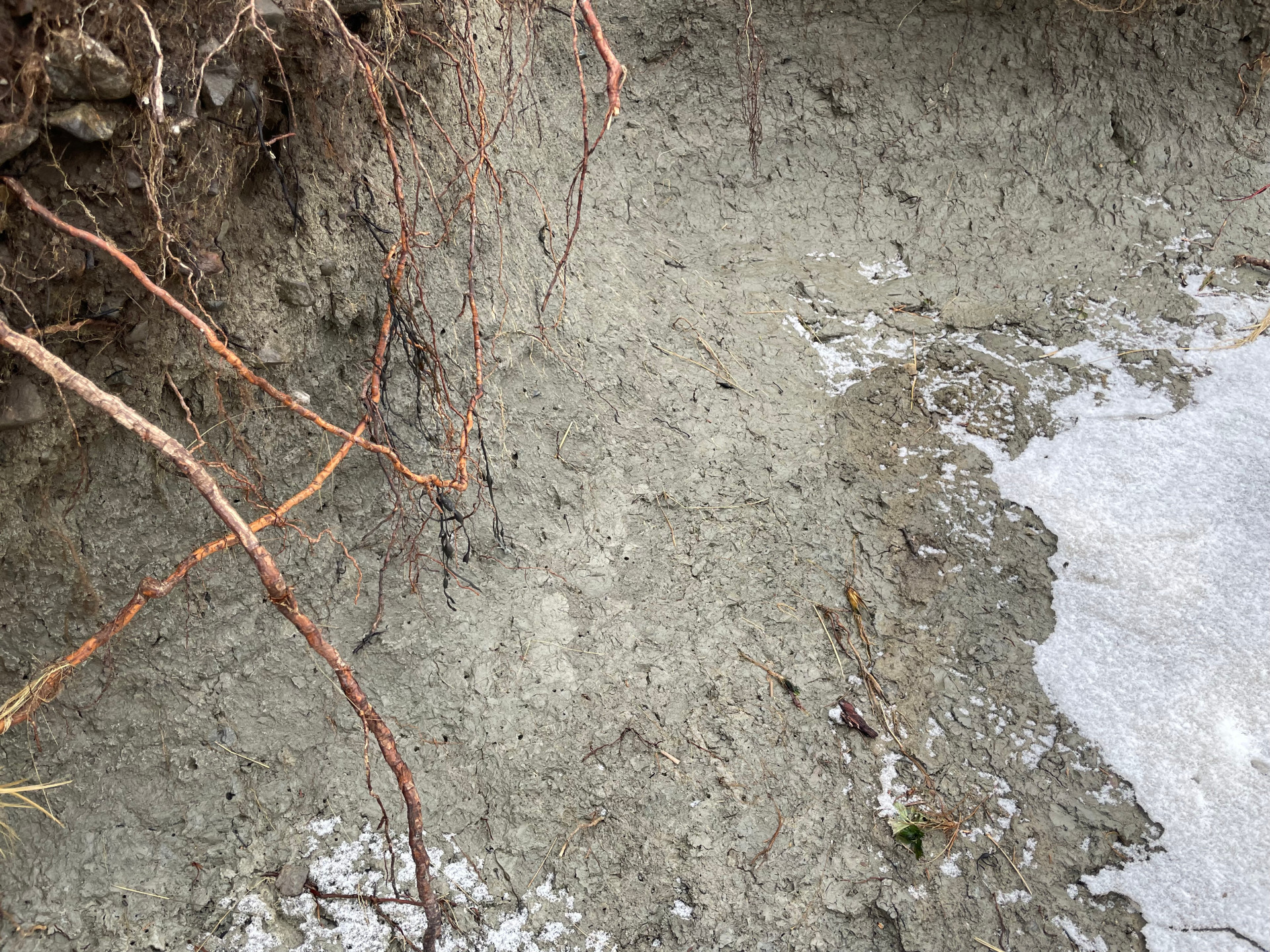
Marine clay deposit at Sand Beach. Photo courtesy Kate Petrie
Acadia’s Geologic Story
Evidence of Acadia’s geologic past – including the aforementioned glacier – can be seen in features and formations across the island. Learn more about Acadia’s geologic story
As for Sand Beach, a Facebook post from Acadia National Park noted that a winter storm occurred about 10 years ago causing similar erosion. By that summer, the beach had returned to its pre-storm condition without any intervention by the National Park Service.
Learn more about Sand Beach in the winter.
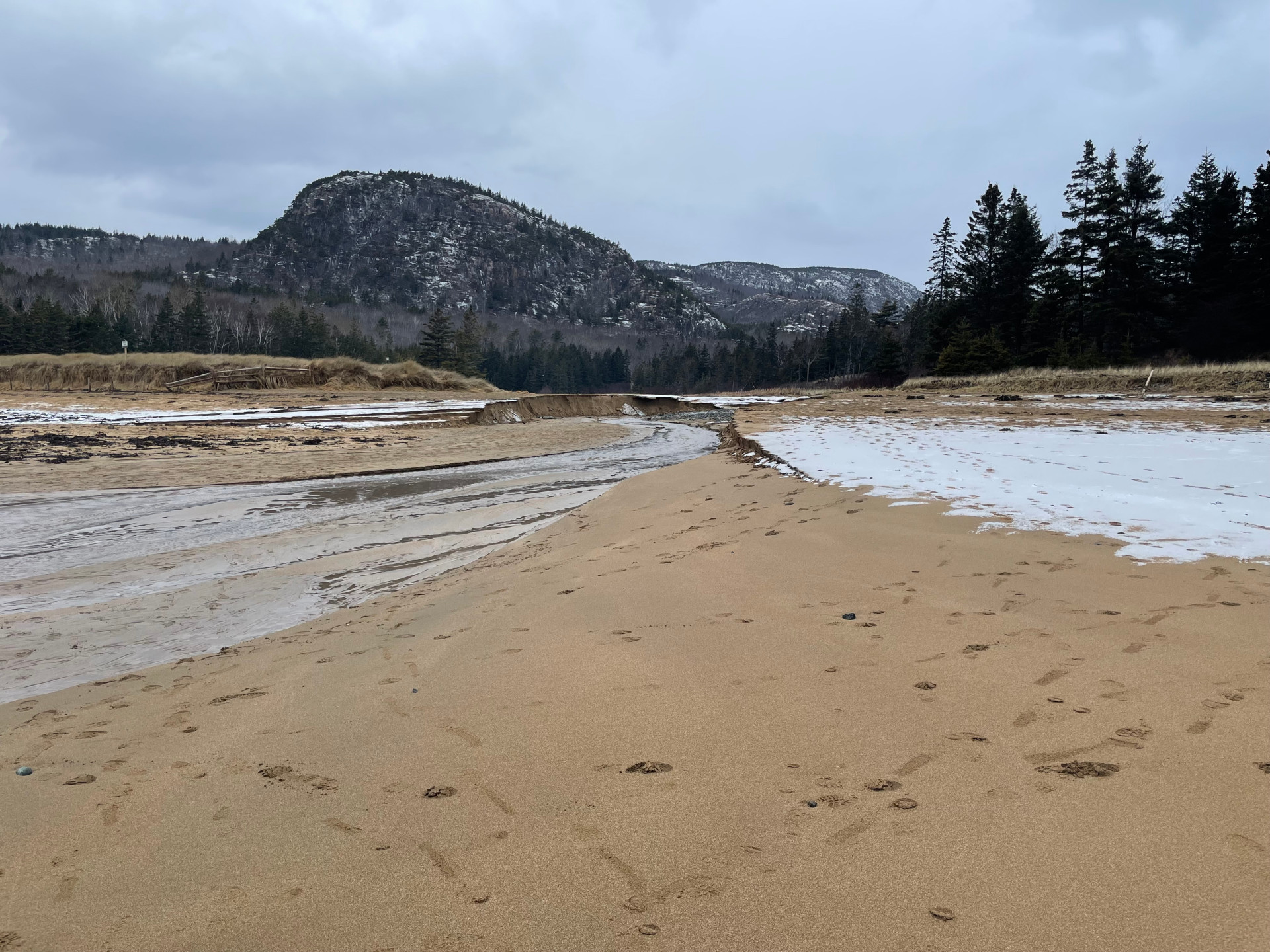
Sand Beach after the late-December storm. Photo courtesy Kate Petrie
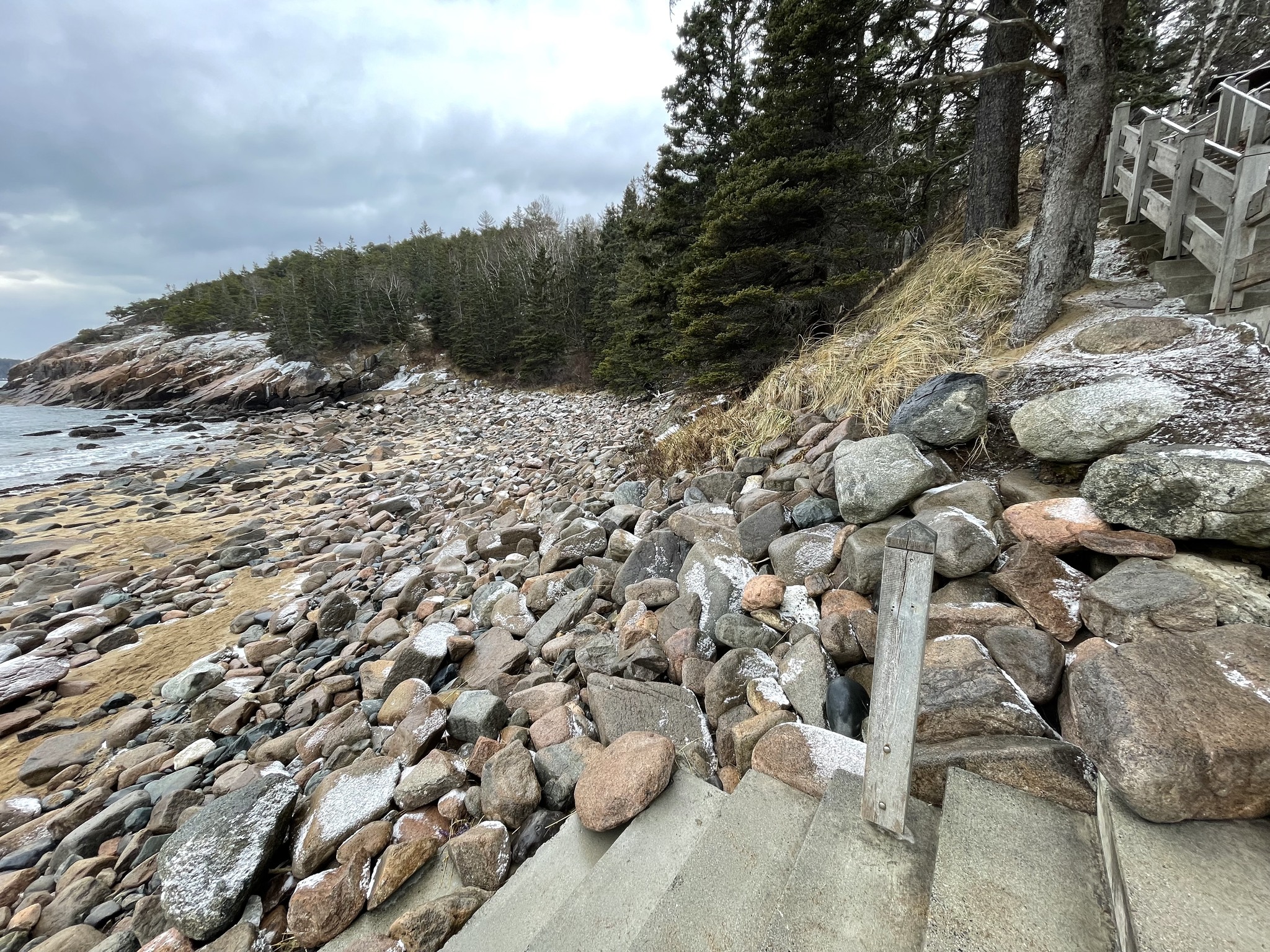
A view of the beach from the stairs at Sand Beach in Acadia following a strong December storm. Photo courtesy Kate Petrie
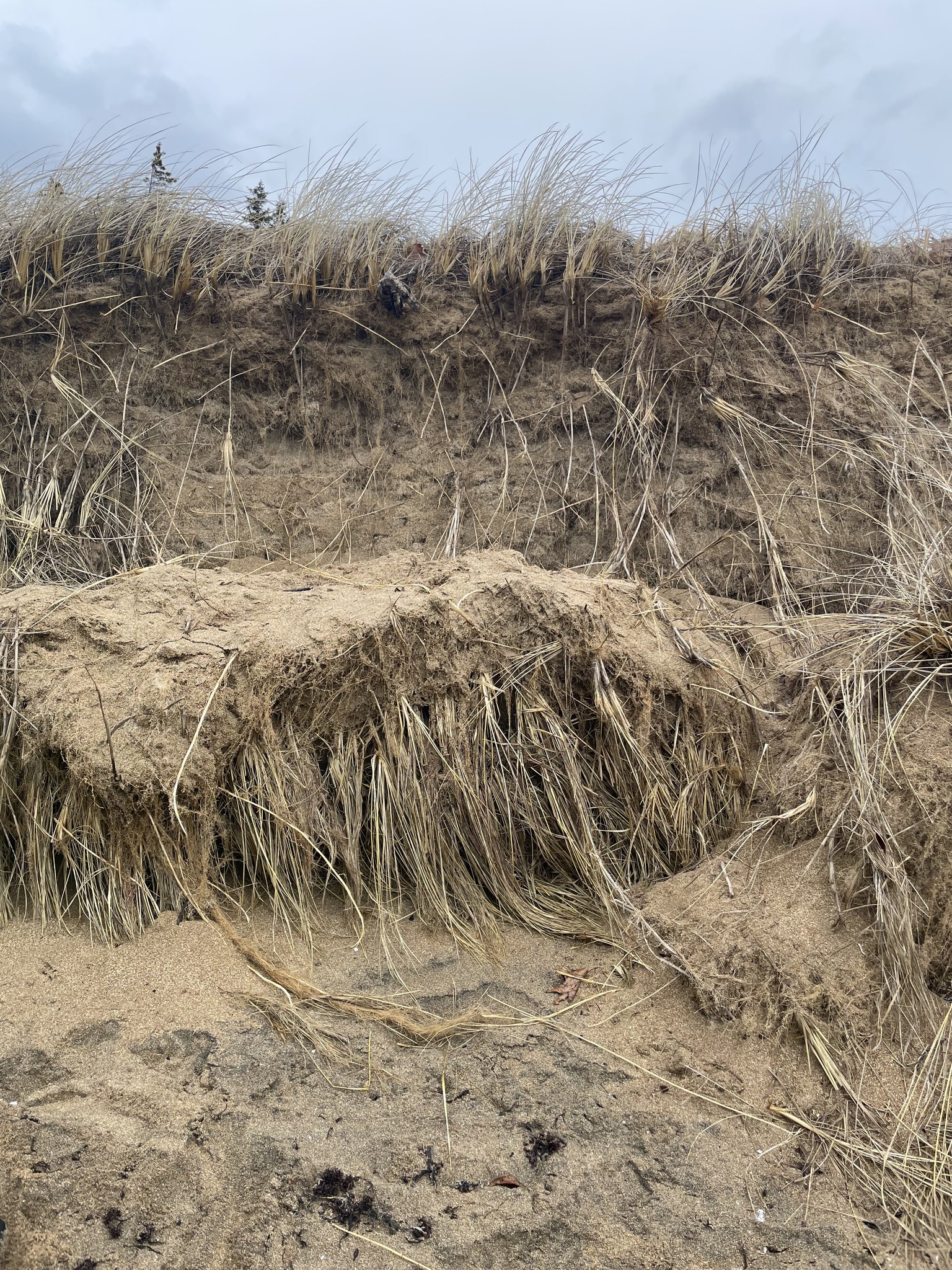
The massive storm combined with a king tide knocked away large chunks from the dunes at Sand Beach. Photo courtesy Kate Petrie
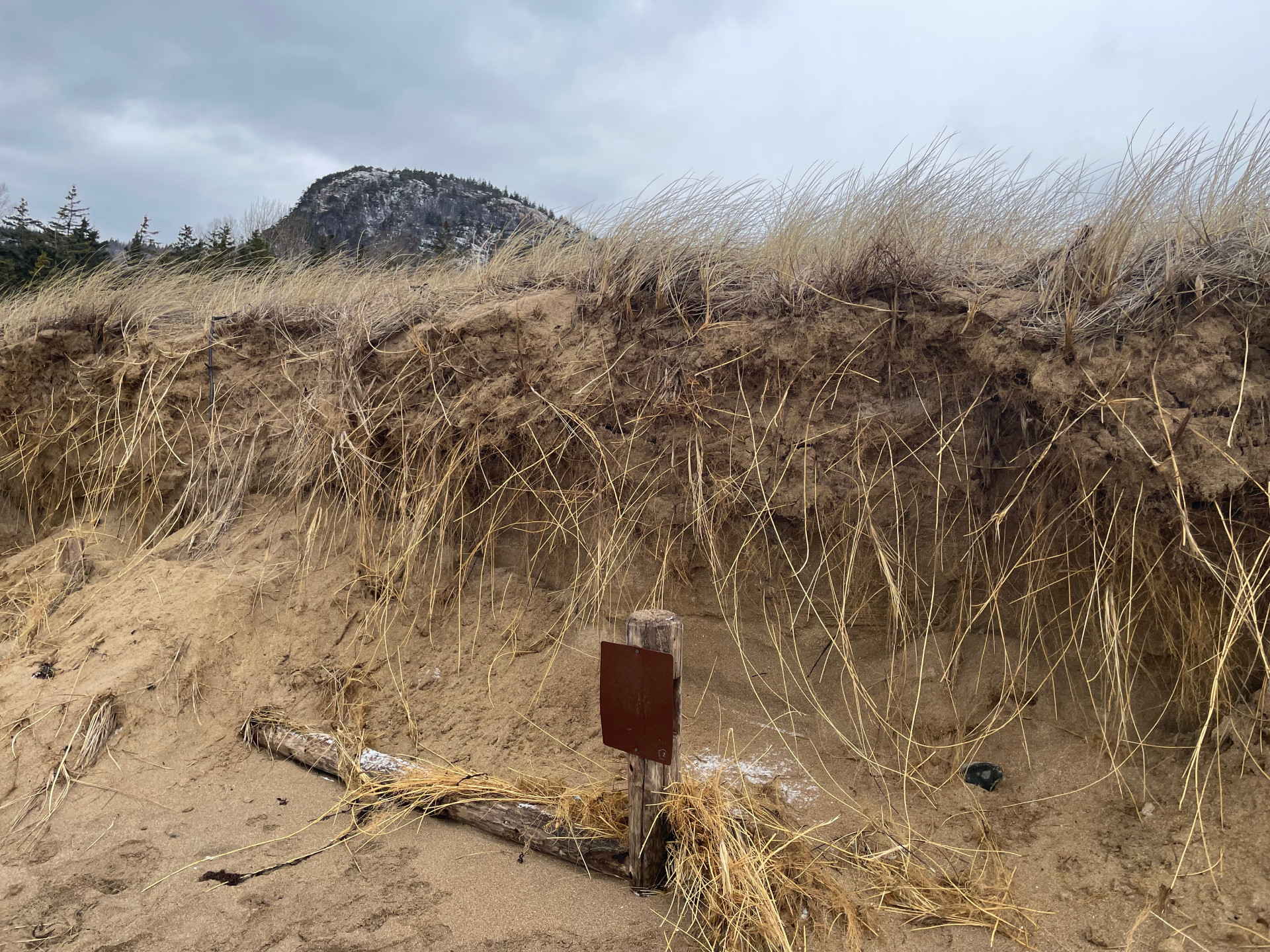
Old fencing exposed during the storm. Photo courtesy Kate Petrie
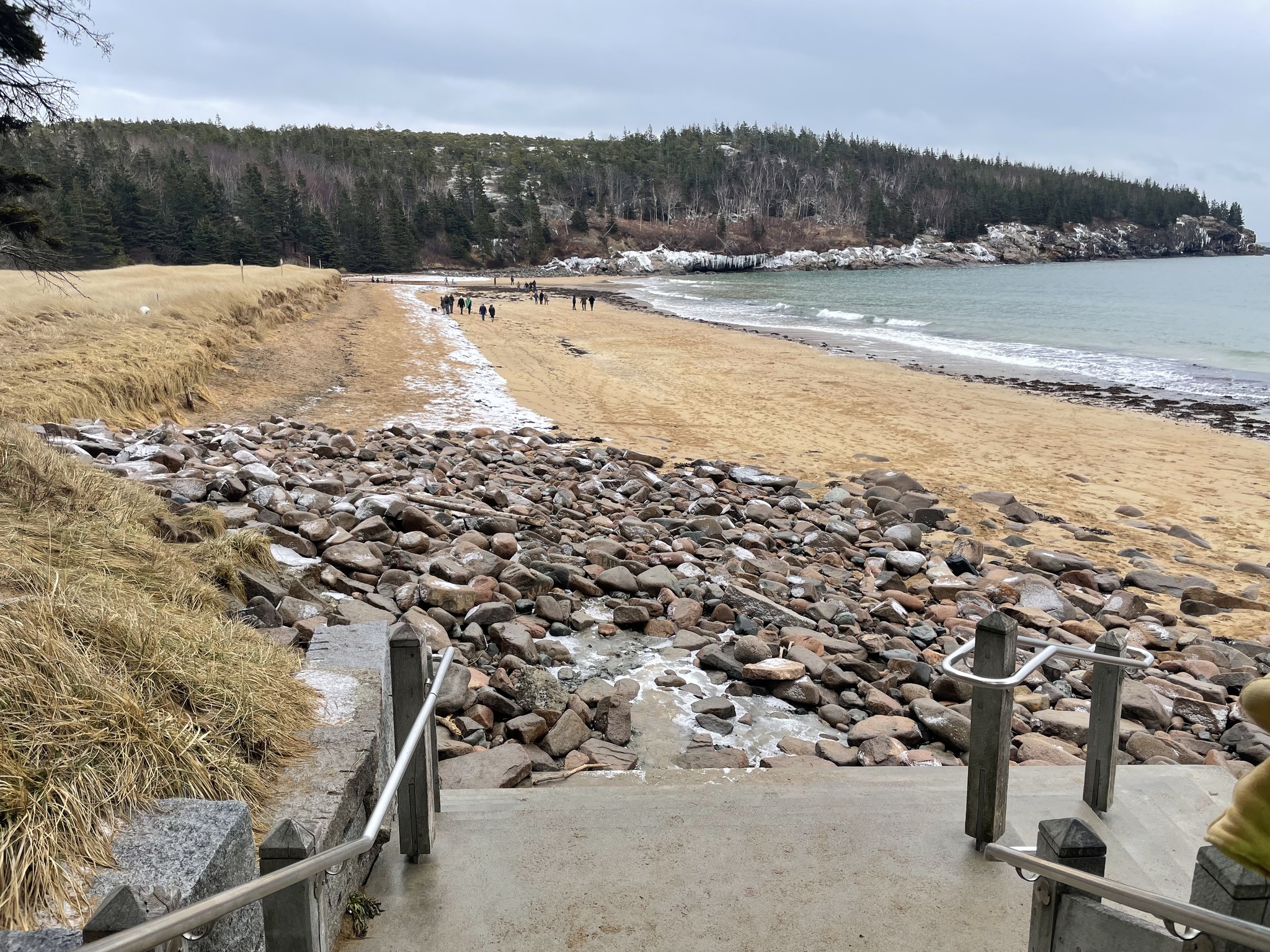
A view of the beach from the stairs at Sand Beach in Acadia following a strong December storm. Photo courtesy Kate Petrie
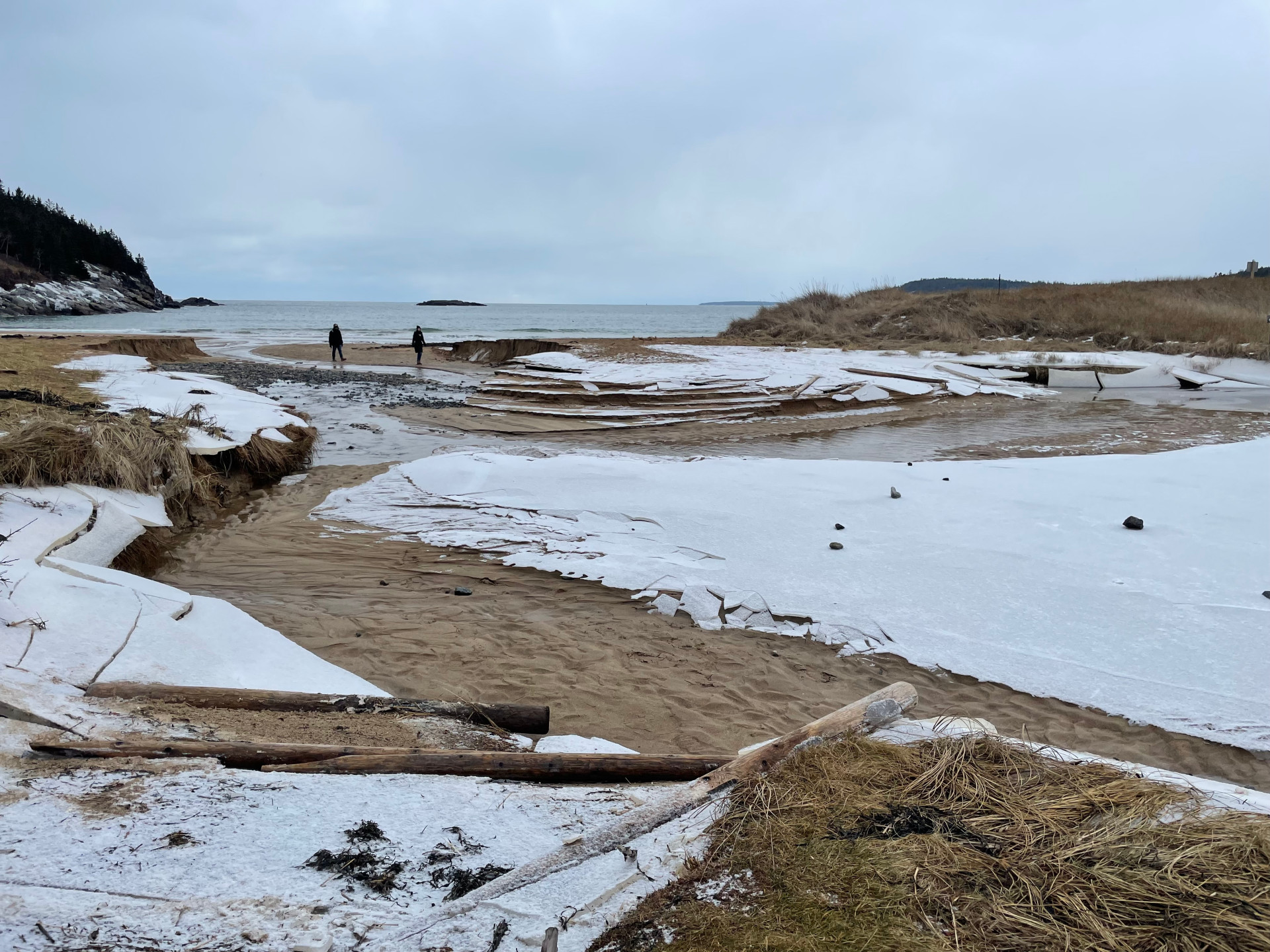
Post-storm looking toward Sand Beach from the lagoon. Photo courtesy Kate Petrie